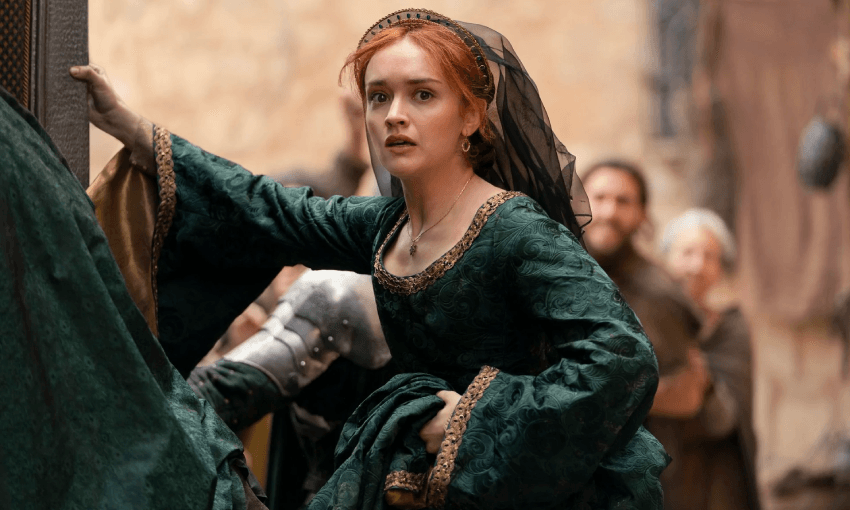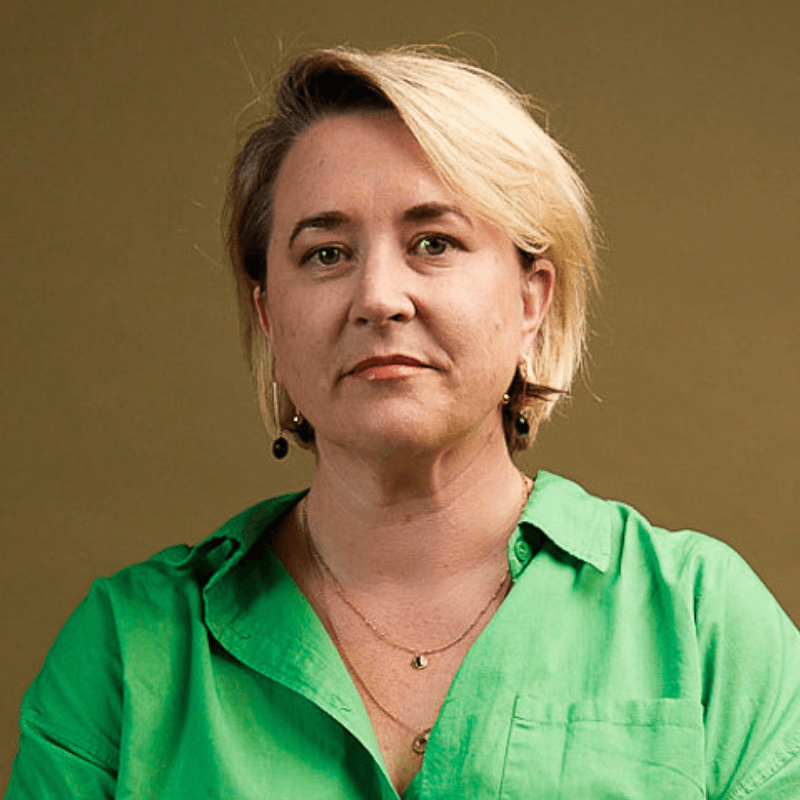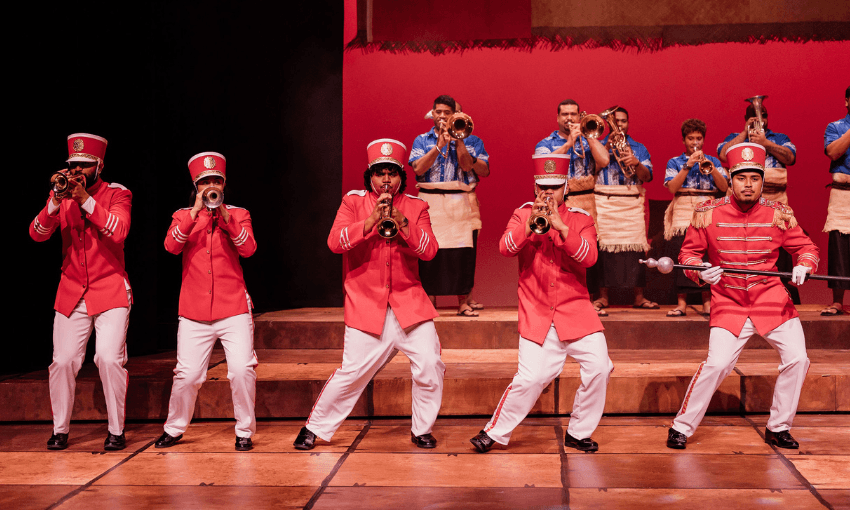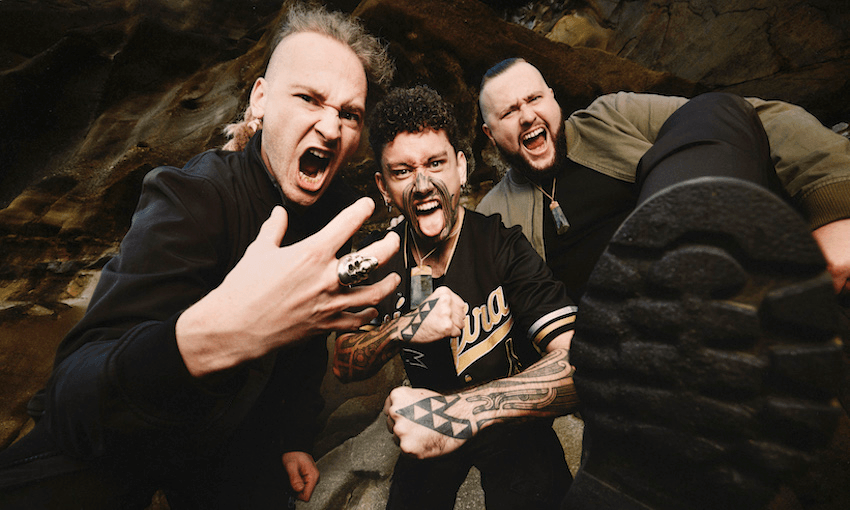The Game of Thrones prequel is a smaller show than its predecessor, and that’s not a bad thing.
James Poniewozik, the New York Times’s chief TV critic, recently said, “We have entered the golden age of Mid TV.” The casts of the numerous series being pumped out and tossed into the milieu are great. The shows look cinematic. Somehow, they’re all just “um…fine,” he writes. And, he says, “they’re everywhere”.
It’s a smart and catchy observation. “Mid” is just slang for average, but it also captures something of our post-pandemic apathy and malaise. We have more television than ever before, and yet many series seem to leave almost no cultural trace. The component parts of prestige television are all there, but few shows develop a symbiotic relationship with the zeitgeist like those of the recent “golden age of television” did. Instead, we’re marooned between the aftermath of the pandemic and the writers’ strike and a reckoning with the economics of streaming. Viewing habits are disparate and sprawling, fandoms are fragmented, and we watch TV in relative isolation — the days of event television and the second-screening era of social media are well behind us.
House of the Dragon is a Game of Thrones prequel, and fitting it into any discussion of television eras is tricky. Its forebear was golden age television. It was too flagrantly preoccupied with spectacle and violence to be considered cerebral, but it reinvented fantasy and nurtured the kind of pursuant online fan culture we might now describe as “Swiftian”. It did brutal, biblically epic, big-budget escapism for eight years. It was watercooler television.
If Game of Thrones had anything deep to say, it was about politics. It sprawled across multiple worlds, ideologies, codes and families. It had beloved characters who managed moral ambiguity across multiple seasons, dancing between redemption and the lure of power. It was very witty at times, but it also reduced many of its female characters to collateral damage and walked some very fine lines between spectacle, narrative progression and gratuitous violence.
Watching the first episode of season two of House of the Dragon, I did wonder if it was just a remnant of the past outstaying its welcome, being milked for gain. I wondered if it was “mid”. According to Poniewozik, retreading former success can be a criterion for something being “mid”, and approximately one million Marvel films and shows support this theory. It’s been almost two years between House of the Dragon seasons, and “event television” that mimics a film release schedule feels like someone is taking the piss. It’s also a bit quaint.
But, as much as “franchise” is used derisively, it also endows promise and burden. That comes with risk and opportunity. House of the Dragon got good reviews when it first debuted, voiding one of the big risks of a spinoff. Those kinds of reviews can sometimes be tinged with the relief of a sequel or prequel not being completely terrible, and as season one went on, the curse of comparison struck.
The show is less concerned with the multi-dimensional game of politics and power at the heart of Thrones and instead has a binary dynastic dynamic at its core. Despite efforts by HBO’s marketing team to reignite the boarding school-style allegiances fans had during Thrones, the war we all know is coming is not a multi-season, multi-clan die-off but a showdown between branches of the Targaryen family. It’s Greens vs Blacks. The children of Alicent Hightower (Emma Cooke) and the now deceased King Viserys I Targaryen (a televisual RIP to Paddy Considine) versus Viserys’s daughter and Alicent’s former best friend, Rhaenyra Targaryen (Emma D’Arcy).
Season one took several confusing big leaps in time, and aside from some occasional aerial shots and a visit to the North in episode one of the new season, we’ve been perpetually stuck within the dank and dark interiors of Dragonstone and the Red Keep. While complaints about how literally dark the show was created a perfect intersection between middle-aged bores (me) and film and television nerds (me), they were legitimate and did nothing to alleviate the sense of confusion and insularity. As a special treat for me and all like me, they have, for season two, freed the lighting director from the dungeon. Watching the first episode, I whispered “backlighting” more times than a kid who is being kept occupied by counting cows on a road trip.
Also missing from this show is the delightful, confusing and compelling pull of the complicated and compromised man. Otto Hightower (Rhys Ifans face acting his face off) is the only male character who is not a man-baby frat boy (Aegon), boring and awful (Ser Criston Cole), loyal but dull (Ser Erryk) or constantly turning on his heel to skulk or depart (Daemon Targaryen). Matt Smith is so far a bit wasted in that role. My claim to the throne for Peter Dinklage’s Tyrion, Conleth Hill’s Varys and even Nikolaj Coster-Waldau’s Jaime Lannister.
For all that’s wrong with Dragon, episode two of the new season offers something new, compelling, and sophisticated. House of the Dragon seems to be having a crack at adding depth to some aspects of Thrones that were lacking. While many are calling for the action, expanse and pace of Thrones, the smaller world of the Dragon has opened up space for something that Thrones failed at multiple times: interesting, three-dimensional women.
Season two plays out in real-time and picks up almost exactly where season one ended. King Viserys is dead. His son Aegon, and not Rhaenyra, is on the throne. Rhaenyra has retired to DragonStone to formulate her next move, and her son, Jacaerys, heads North to visit the Starks. Aemond Targaryen murdered Rhaenyra’s other son, Lucerys, at the end of season one and Rhaenyra is grieving. The end of episode one of the new season is an exercise in repaying that awful debt, as Aegon and Helaena’s young son, Jaehaerys, is murdered in his bed by assassins Cheese (a rat catcher) and Blood. An eye for an eye, a son for a son.
The grief of women and the grief of mothers punctuate this show. In the second episode of the new season, there’s a shot of Alicent in the bath, submerged beneath the water that’s been plucked straight out of many films about women on the brink.
Where Thrones might have been brutal in dispatching quick death, House of the Dragon is brutal in giving its women the bulk of the emotional work and burden to carry. It is Cooke and D’Arcy who are the most compelling in both seasons to date, and it’s because they’re both unable to suspend their belief in the reward of chasing power while sinking into guilt and grief. House of the Dragon isn’t steered by big man politics but by vengeance and broken families held together by two matriarchs and former friends. It’s Cersei Lannister territory without the descent into sociopathy.
The show also has more interesting and contemporary things to say about the relationship between the monarchy and what House of the Dragon calls the “small folk” than Thrones ever did. Thrones had the adoration of Daenerys by the masses of slaves she freed, but that skated pretty close to white saviour territory most of the time, and there was a small nod to the use of the common people as a means of asserting her queendom by Margaery Tyrell. Otherwise, the role of the smallfolk was largely reserved for crowd shots and dismissals from court.
A funeral procession for Jaehaerys through the streets of King’s Landing is exploitatively engineered by Otto Hightower to bolster the flagging public perception of Aegon’s strength as king. Alicent and Helaena sit on a carriage behind Jaehaerys’s small, lifeless body, trading their grief for what, in modern terms, would be a lift in the monarchy’s approval rating. There are suggestions that the blockade instituted in support of Rhaenyra across the Gullet, the stretch of water that separates the Narrow Sea from Blackwater Bay, is already causing anxiety about food shortages, and we see this through the eyes of an affected “smallfolk” family. Aegon dispatches with Otto as Hand of the King when Otto questions his grip on the importance of public perception. Aegon has ordered that anyone fitting the description of “ratcatcher” be hanged, and so they are. As Otto points out, they are someone’s son, husband, father or brother.
I’m not sure House of the Dragon deserves to be hounded about pace and expanse just yet. Thrones didn’t really kick into action until Ned Stark’s head was cut off. Cooke and D’Arcy, the lynchpins of the Dragon show, didn’t make it onscreen until episode six of season one. There is time for their stories to become more engrossing yet.
It’s both fair and frustrating that the show cannot escape its long but undoubtedly lucrative shadow, but having watched 12 episodes, I think the show escapes classification as mid. Free Dragon from its predecessor, and you get something that isn’t quite perfect but very interesting, helmed by two compelling and complex women. It might not achieve the sprawling spectacle of Game of Thrones, but House of the Dragon is carving out its own niche by focusing on more intricate dynamics and reminding us that there is room for emotional resonance amid cinematic spectacle.






